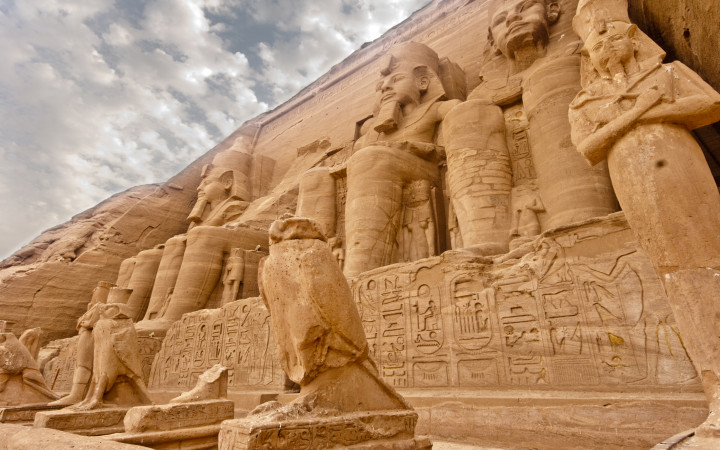Today’s Wonder of the Day was inspired by jasper. jasper Wonders, “What are hieroglyphs?” Thanks for WONDERing with us, jasper!
Would you like to travel back in time to ancient Egypt? Would you find a mummy? Chat with the Pharoah? Help build a pyramid? That would be a great adventure! Before you go, be sure to brush up on hieroglyphs.
What are hieroglyphs? They’re part of the ancient Egyptian writing system. You may have seen examples of hieroglyphs in movies or TV shows before. This system of writing is over 5,000 years old. It used pictures instead of letters like our modern alphabet.
In ancient Egypt, the people who wrote with hieroglyphs were called scribes. Hieroglyphs took a long time to write. Imagine writing your next homework assignment using pictures! That’s why the scribes later came up with an easier form of writing called Demotic script.
Over time, new scribes only used Demotic script. It was not long before no one knew how to write or even read the old hieroglyphs!
When archeologists found hieroglyphs on ancient Egyptian pyramids and tombs, they could not read them. They knew the writing meant something. Still, no one knew how to interpret them!
This was a problem until 1799. That year, Napoleon’s army invaded Egypt. There, his troops found an ancient stone. It helped end the mystery of hieroglyphs.
That stone is called the Rosetta Stone. It was named after the name of the area in which it was found. The stone had the same short story written on it in three types of writing. They were Greek, Demotic script, and hieroglyphs.
Since scholars could read Greek and Demotic script, they could study the hieroglyphs to figure out how they worked. Jean-François Champollion completed the translation by the 1820s. Today, people can visit the Rosetta Stone in the British Museum in London.
Experts learned that hieroglyphs were very complex. Even though it was made of pictures, the writing was more phonetic than symbolic. It was made up of three types of glyphs (symbols). Phonetic glyphs are like alphabet letters. Logographic glyphs represent prefixes, suffixes or short words. Determinative glyphs narrow down the meaning of phonetic and logographic glyphs.
Do you think you could read hieroglyphs? Maybe you could learn them well enough to become a scribe! Just think of the fun you could have writing stories and secret messages in hieroglyphs. Give it a try—we can’t wait to see what you come up with.
Standards: C3.D2.His.2, CCRA.L.3, CCRA.L.6, CCRA.R.1, CCRA.R.2, CCRA.R.4, CCRA.R.10, CCRA.SL.1




